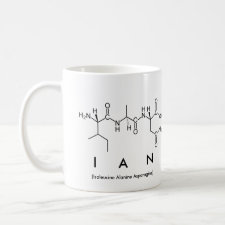
Authors: Cleland D, Olsson GD, Karlsson BCG, Nicholls IA, McCluskey A
Article Title: Molecular dynamics approaches to the design and synthesis of PCB targeting molecularly imprinted polymers: interference to monomer-template interactions in imprinting of 1,2,3-trichlorobenzene.
Publication date: 2014
Journal: Organic & Biomolecular Chemistry
Volume: 12
Issue: (5)
Page numbers: 844-853.
DOI: 10.1039/C3OB42399A
Abstract: The interactions between each component of the pre-polymerisation mixtures used in the synthesis of molecularly imprinted polymers (MIP) specific for 1,2,3,4,5-pentachlorobenzene (1) and 1,2,3-trichlorobenzene (2) were examined in four molecular dynamics simulations. These simulations revealed that the relative frequency of functional monomer-template (FM-T) interactions was consistent with results obtained by the synthesis and evaluation of the actual MIPs. The higher frequency of 1 interaction with trimethylstyrene (TMS; 54.7%) than 1 interaction with pentafluorostyrene (PFS; 44.7%) correlated with a higher imprinting factor (IF) of 2.1 vs. 1.7 for each functional monomer respectively. The higher frequency of PFS interactions with 2 (29.6%) than TMS interactions with 2 (1.9%) also correlated well with the observed differences in IF (3.7) of 2 MIPs imprinted using PFS as the FM than the IF (2.8) of 2 MIPs imprinted using TMS as the FM. The TMS-1 interaction dominated the molecular simulation due to high interaction energies, but the weaker TMS-2 resulted in low interaction maintenance, and thus lower IF values. Examination of the other pre-polymerisation mixture components revealed that the low levels of TMS-2 interaction was, in part, due to interference caused by the cross linker (CL) ethyleneglycol dimethylacrylate (EGDMA) interactions with TMS. The main reason was, however, attributed to MeOH interactions with TMS in both a hydrogen bond and perpendicular configuration. This positioned a MeOH directly above the π-orbital of all TMS for an average of 63.8% of MD2 creating significant interference to π-π stacking interactions between 2 and TMS. These findings are consistent with the deviation from the 'normal' molecularly imprinted polymer synthesis ratio of 1 : 4 : 20 (T : FM : CL) of 20 : 1 : 29 and 15 : 6 : 29 observed with 2 and TMS and PFS respectively. Our molecular dynamics simulations correctly predicted the high level of interference from other MIP synthesis components. The effect on PFS-1 interaction by MeOH was significantly lower and thus this system was not adversely affected
Template and target information: 1,2,3,4,5-pentachlorobenzene, 1,2,3-trichlorobenzene



Join the Society for Molecular Imprinting

New items RSS feed
Sign-up for e-mail updates:
Choose between receiving an occasional newsletter or more frequent e-mail alerts.
Click here to go to the sign-up page.
Is your name elemental or peptidic? Enter your name and find out by clicking either of the buttons below!
Other products you may like:
 MIPdatabase
MIPdatabase









